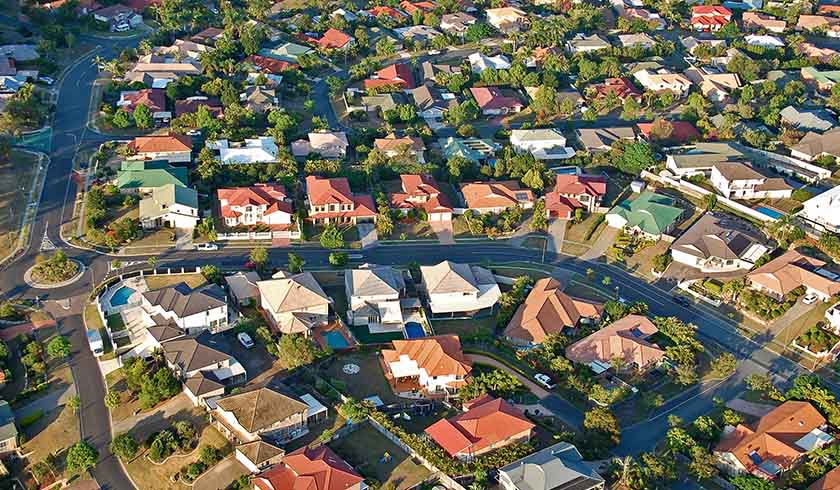Getting back to basics: Understanding the different investment types
Every surfer has their favourite break. There’s no point paddling around in the white water indefinitely; the fun is out the back! It’s the same with property investing.

You’ll start off with some simple guidelines and then move forward into more complex, potentially riskier, but increasingly rewarding ventures that fit your strategy and your barometer. So, let’s take a minute to walk through the strategies that follow the risk and reward hierarchy and some of the key points involved.
- Buy and hold
- Buy and renovate
- Buy and develop
- Buy and sell (after growth has occurred)
- Buy new (depreciation and negative gearing focus)
- Buy existing (proximity to amenities and larger land component)
- Commercial
- Rural/regional
- Metro/major city
So, to do this justice and discuss the two major investment property decisions most people are faced with, I’m going to focus on cash flow investing vs capital growth investing.
Cash flow
There’s an old adage favoured by the crustier members of business that claims “cash flow is king”. In many respects, this is true, but it doesn’t tell the whole story.
The importance of concentrating on cash flow when you’re investing can’t be overstated, because a strong cash flow keeps you afloat as an investor – particularly over the long term. What is cash flow positive?
Put simply, a cash flow positive property is an investment where the annual rental income covers all yearly costs, from mortgage repayments to maintenance to council rates, property management fees and charges, the lot, and there are some dollars left over that go straight back into your bank account.
The aim of this model is to build up a portfolio so big that the total combined net leftover income equals your wished-for retirement income. Simple!
However, there are hidden and obvious dangers in the ocean of sole positive cash flow investing. My earnest suggestion to those considering a cash flow only portfolio is: don’t hang your hat on this one measure or return. Look for the fundamentals that help mitigate the risks, for example, multiple industries that are helping drive the local economy or a tightening or control of future housing supply.
Capital growth
You don’t have to travel far into the world of real estate investment before you stumble upon devotees of the capital growth approach to property investment.
Capital growth (or capital gains) refers to the increase in value of your asset over time. You’ll often see capital growth expressed as either a percentage or dollar amount stated alongside the period over which it improves (or, in the case of some mining towns, falls).
“But what determines capital growth?” I hear you asking. The elements that drive capital growth and property values sit squarely within the foundations of economics and they are the two measures on which entire societies operate and survive: supply and demand.
Basically, if the demand for an asset exceeds the supply of that asset, then its price will rise. Conversely, if there’s little demand and plenty of supply, prices fall. I delve deeply into multiple examples and markets where investors have made and lost vast amounts of money by adhering or neglecting these fundamentals.
So, what are the factors that help push the demand side of the equation in your favour as an investor?
- Find locations with a diverse economic base
- Find locations with quality fundamental services – facilities and infrastructure make potential investment suburbs fairly easy to understand
- Another key element is the ease in which residents can move around. Transport infrastructure is an excellent measure of possible value gains, like new rail extensions that bring outer suburbs closer to the CBD. Dedicated busways also ensure an easier commute
- Parks, community sporting facilities, safety and security – these are all attributes that make any location a desirable place to live. Don’t discount their ability to help push prices when you’re looking at where to park your dollars
- Think scarcity. This is a fundamental supply driver that helps investments continue to rise in value and will always be a determinant in long-term capital gains
Cash flow v capital growth
We now know cash flow helps us offset the monthly costs of our holdings, but high cash flow carries risks that can see us miss out on big returns in a turning market, and there’s traditionally less exponential growth in your net wealth.
On the other hand, high-growth assets see your personal wealth increase exponentially, but loan servicing costs can drive you to the financial brink.
What’s the solution? In my opinion, it’s balance and diversification that matter. If you choose one strategy to the exclusion of the other, you’re bound to hit a roadblock on your investment journey – so try to achieve a healthy mix of both.
You should always consider your current portfolio, position, income, dependants and financial and investment goals to determine what your next investment should be, whether that is a high-growth property or cash flow positive property or a blend of both.
The type of investment property you choose should always serve a purpose in achieving your investment goals. In the end, it will be your long-term plans that will help you decide which property to invest in.